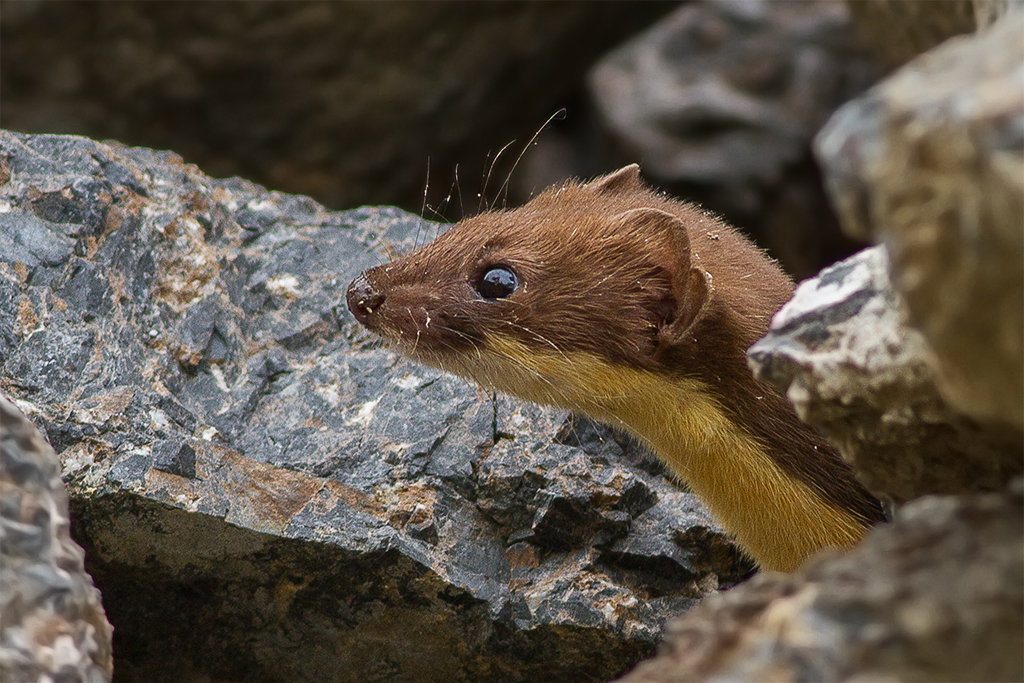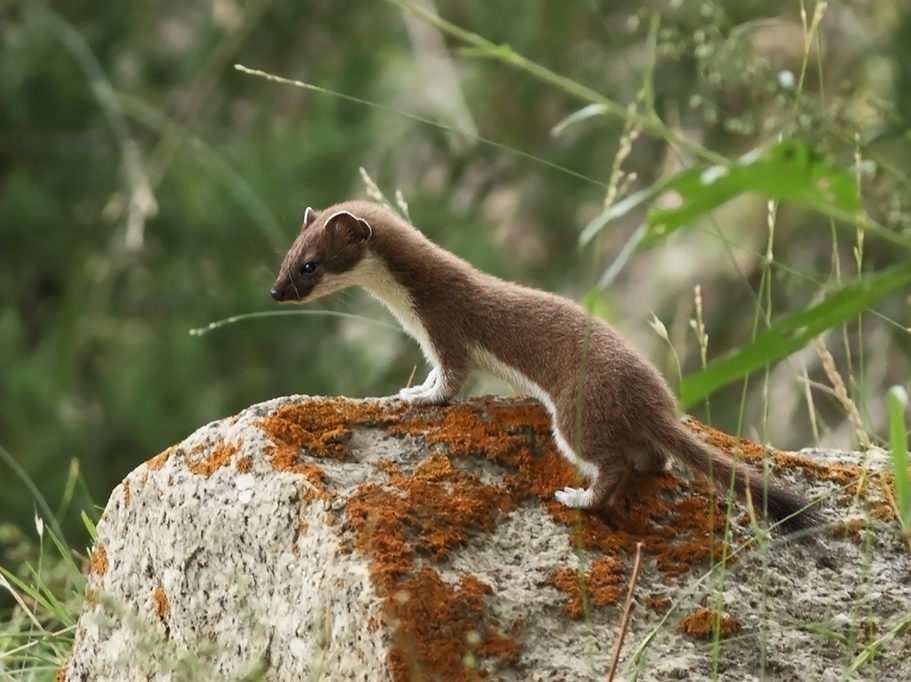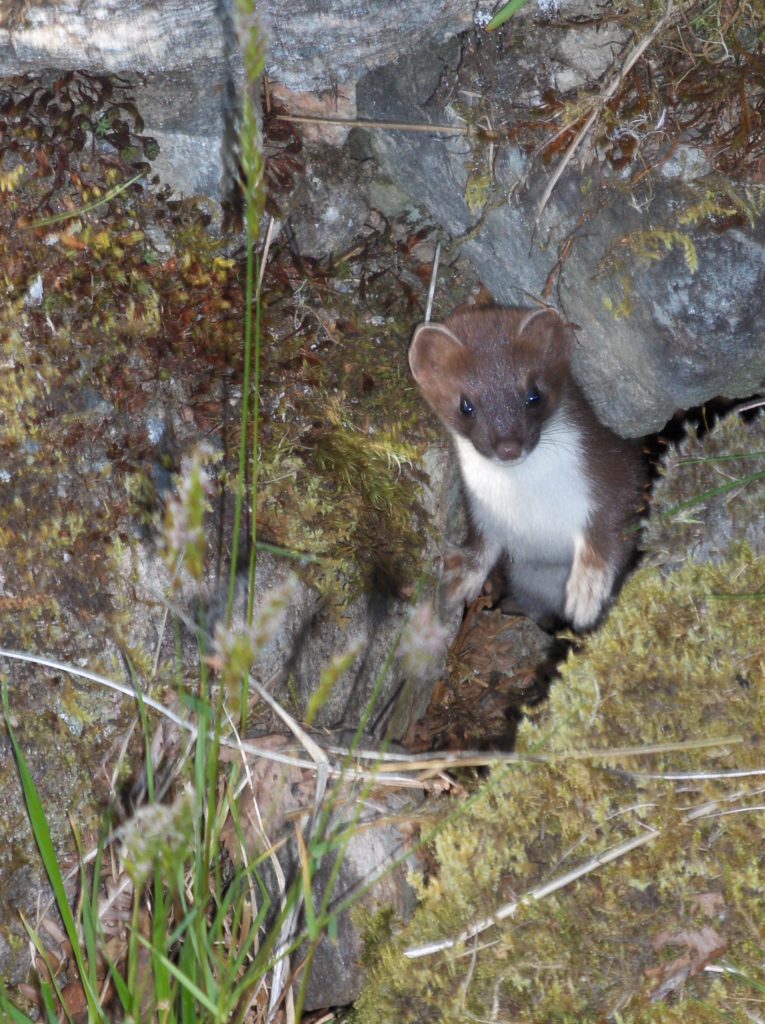When stoats were recently captured on video raiding the spring nests of rock wren, yet tracking tunnels failed to detect their presence, scientists became concerned about the effectiveness of tracking tunnels as a monitoring method in alpine regions. Was there a better way to detect stoats? How did other monitoring techniques compare with tracking tunnels in an alpine setting?
Des Smith of Wildland Consultants and Kerry Weston from DOC investigated and compared three monitoring methods for alpine stoats and the results of their research have just been published in the journal Wildlife Research.

The research was carried out at Bealey Spur and Cass-Lagoon Saddle, located on public conservation land near Arthur’s Pass, South Island, New Zealand. The study area ranged in altitude from 1000m to 1600m asl, and largely comprised alpine grassland (Chionochloa spp.), with mixed alpine scrub and cushion vegetation.

Tracking tunnels are a method commonly used in New Zealand to detect predators, but rely on the animal being willing to be lured into a tunnel in order to leave tracks. Older and more wily predators may be cautious about using the tunnels. What’s more, the method was tested and calibrated in a forest setting so it’s effectiveness for detecting predators in the alpine environment has not been well studied.
One factor in the failure to detect stoats may be that the individuals that prey on rock wren nests in spring are mature adults which have survived the winter and have perhaps learnt more caution than the juveniles detected by monitoring tunnels in the autumn season. According to the researchers, stoats are known to be difficult to detect during their spring breeding season.
“We compare the effectiveness of the most commonly employed method for monitoring mustelids in New Zealand, footprint-tracking tunnels, with two alternative detection methods, camera traps and artificial nests. We were interested in determining whether alternative detection methods were more sensitive in detecting stoats than tracking tunnels. We established a network of tracking tunnels, artificial nests and camera traps within alpine habitat. Devices were checked for stoat detections weekly across two seasons, in spring–early summer and autumn. Differences in detection rates and cost effectiveness among methods were analysed among seasons.”
The artificial nest method doesn’t seem to be used a great deal in New Zealand, but involves enticing predators to leave bite marks in a fake egg.
“Artificial nests, which typically use a real egg paired with a fake egg, made of some medium that allows predator-teeth marks to be identified, are traditionally used as a proxy to study nest survival, and measure variation in predation rates associated with different nest, habitat, spatial and temporal variables. The use of artificial nests to study nest predation has been widely criticised as being a poor predictor of reproductive success in real bird populations. However, little consideration has been given to the possibility that they may have value as a tool for detecting and indexing small mammalian predators.”
Monitoring equipment needs to be rugged to cope in the alpine environment.
“Tracking tunnels consisted of a black polypropylene plastic cover stapled onto a heavy wooden base with a wire bracket fixed at each end. This tunnel design was selected to minimise disturbance from kea and prevent tunnels from collapsing beneath snow or blowing away in the exposed alpine conditions. For all tracking tunnels, Black Trakka Ink Cards were used to record footprints. Tunnels were baited with A cube of fresh rabbit meat.”
Both a genuine hen egg and plastaline egg were used in the fake nests.
“A nest bowl was created at the base of tussocks, and a domestic chicken egg was paired with a similar-sized and -shaped white plastaline egg. The plastaline egg had a wire loop through it that was pegged to the ground, preventing it from being easily removed by a predator. Stoats are able to remove the hen egg, but leave distinguishable incisor and/or canine bite marks in the plastaline egg when they try to remove it. Artificial nests were deployed in clusters containing three artificial nests 2–3m apart.”
A number of motion sensor cameras were also set up.
“Fourteen Keepguard 12MP 720P infrared digital camera units were placed throughout the study area. These units use a passive infrared motion sensor and LED infrared flash to detect and record passing animals.”
The time taken before a stoat was first detected was recorded for each method. The results confirmed the limitations of tracking tunnels for detecting alpine stoats during their spring breeding season. The differences were, in fact, quite dramatic:

“The first detection by a camera trap was on Day 7 (median 43.5 days), and on Day 8 for artificial nests (median 27.5 days); in comparison, tracking-tunnel lines did not detect a stoat until early summer, i.e. Day 61 (median 69 days). In autumn, detection rates were more rapid for all three methods. Stoats were detected by all three methods at, or before, the first weekly check, with cameras detecting stoats first, after 2 days.”
Cost comparisons are also interesting. Artificial nests were the most cost-effective detection method in both seasons.
“The initial set-up costs of the three detection methods also varied considerably, ranging from NZ$590 for artificial nests to NZ$5316 for trail cameras. The most expensive component of expenditure was the purchase of the digital-camera units. Labour comprised a substantial proportion of the cost for tracking-tunnel monitoring, owing to the construction of heavyduty wooden base tunnels suitable for longer-term use in alpine conditions and their transport by field staff into the study area.”
Labour costs for the ongoing monitoring were also calculated.
“The subsequent costs associated with each monitoring occasion were less variable (NZ$340–518) and largely comprised labour, travel, consumables (bait and ink cards) and analysis. Time taken to check the devices was similar, as approximately the same distance on the ground was covered by field staff travelling among the different devices. However, the hours associated with analysis of camera footage increased the ongoing costs for this detection method.”
Artificial nests came out as the cheapest method overall, when both setup costs and monitoring time to detect the first stoat were taken into account.
“In spring, a stoat was detected at the first monitoring occasion for both artificial nests and trail cameras, producing a total estimated cost to detect at least one stoat of NZ$930 and NZ$5834 respectively. For tracking tunnels, nine monitoring occasions were required to achieve one stoat detection. The total estimated cost for a tracking-tunnel stoat detection in spring–early summer was NZ$5406.”
The researchers’ overall conclusion was that artificial nests and camera traps were both more efficient than tracking tunnels at detecting stoats during their breeding season when they are known to be difficult to detect.
“Artificial nests have potential to be developed into a monitoring index for small mammals, although further research is required. Both methods provide an important alternative to footprint tracking indices for monitoring stoats. Our study demonstrated the importance of calibration among different monitoring methods, particularly when the target species is difficult to detect. We hypothesise that detection methods that do not rely on conspicuous, artificially constructed devices, may be more effective for monitoring small, cryptic mammals.”
This research paper is published in Wildlife Research where only the abstract is freely available.
The full paper is freely available on Researchgate:

